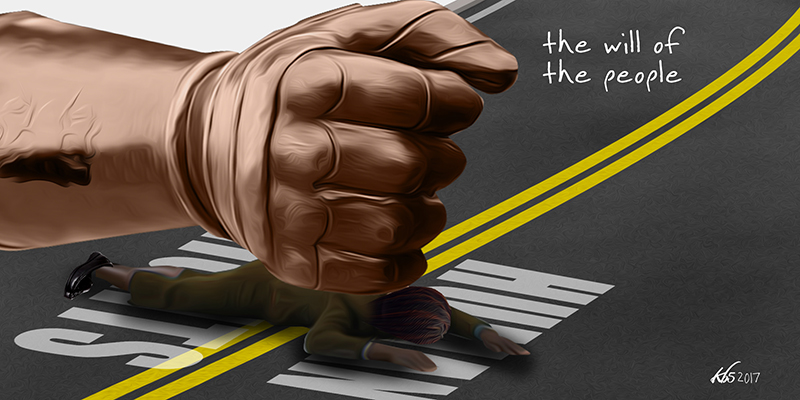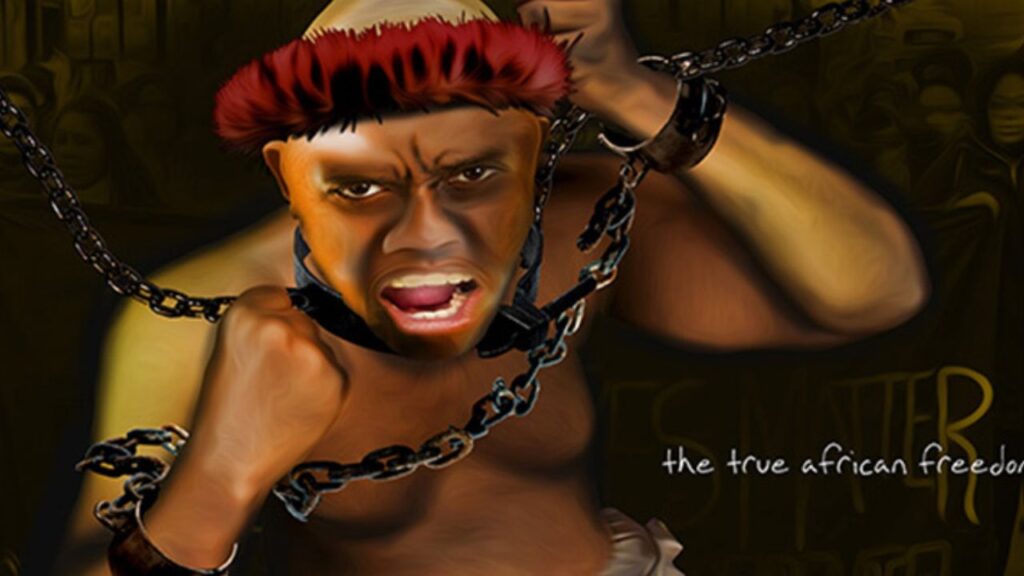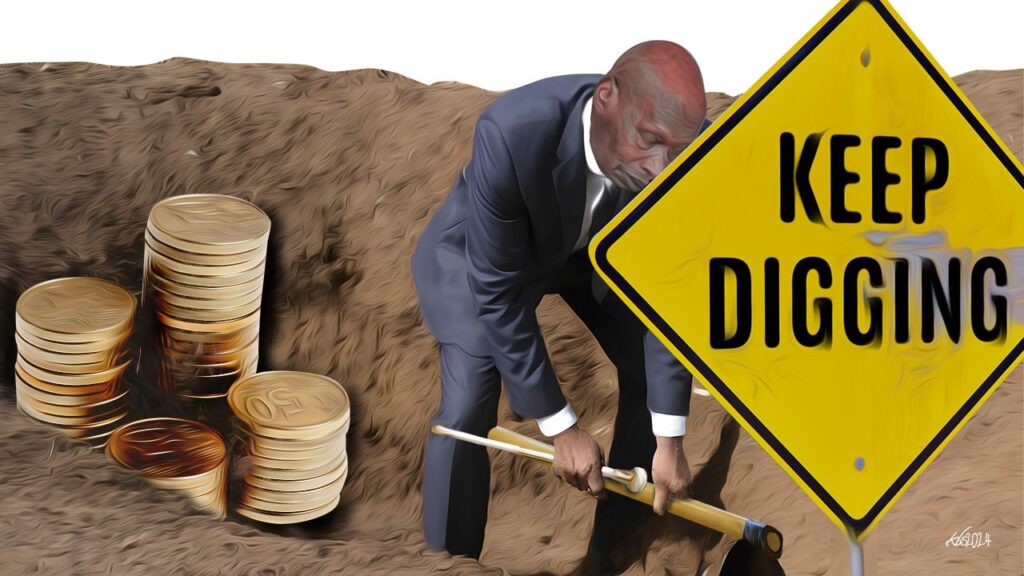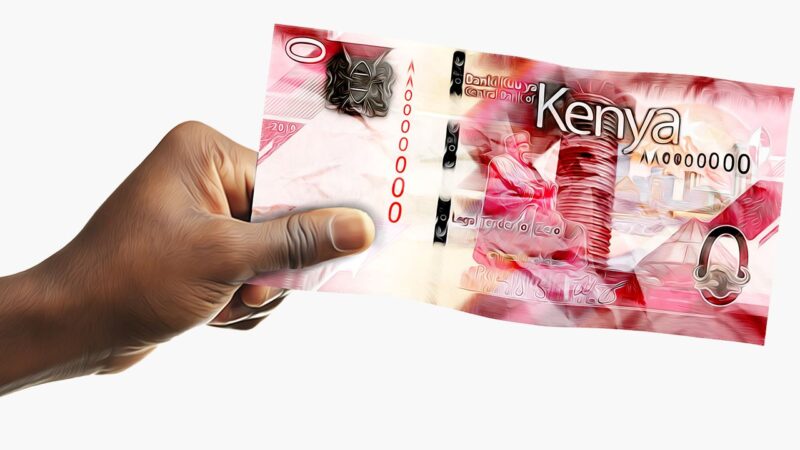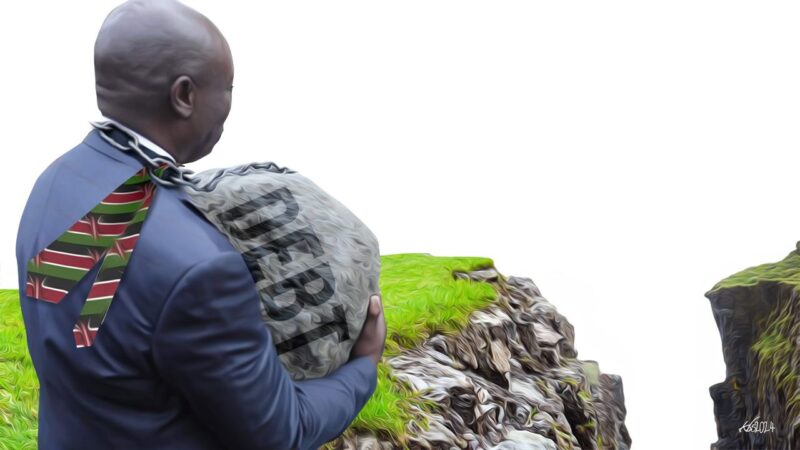At 10am last Friday, the sky above Kisumu shook with the sonic crack and roar of fighter jets circling overhead. There was no apparent reason for this military exercise—no national holiday or celebration—yet everyone below looking up knew exactly what was happening.
Ahead of a planned announcement from opposition party National Super Alliance (NASA) that day, the central state was sending a warning.
Its message in the sky was not a new one. In what is arguably the most iconic photograph of opposition protest from this year’s election in Kenya, a single protester faces two military lorries, unfazed beneath arcs of water cannons and rising tear gas. In the foreground, as if a watermark of the moment: a Kenyan flag held high.
This image of defiance—one every-man against the violent, faceless state machine, came to define the antagonism with which the state has treated NASA supporters, led by longtime opposition leader and former Prime Minister Raila Odinga.
But it is also an image, of posturing in bad faith and intimidation, that has no place in a post-reform democracy, or so it would seem.
The events that have unfolded since August 8 suggest that the Kenyan state has regained a monopoly over instruments of political violence. The environment in which this year’s election took place included the all-too-familiar “peace at all costs” narrative, as well as the decommissioning of ethnic militias that, for much of Kenya’s history, were part and parcel of campaigning for office.
This year, in a manner much less contested than that of Kibaki, Uhuru’s immediate predecessor, state actors openly intimidated the opposition, civil society, and the judiciary and, above all, killed, raped, and terrorized civilians.
According to the Kenya National Human Rights Commission, seventy-six people, including ten children, had died from opposition protests and police backlash by the time Uhuru Kenyatta was sworn in for his second term as president on November 28. A joint report by Amnesty International and Human Rights Watch submits that the police behaved appropriately in some instances but, in many others, shot or beat protesters to death.
After a protracted election process, Uhuru Kenyatta and his deputy William Ruto were re-elected for a second term in office. Their victory from the original election on August 8 was overturned by the Supreme Court due to irregularities in results transmission. The re-run on October 26 was boycotted by NASA, resulting in a landslide victory for Uhuru.
Kenya, currently in its sixth electoral cycle since the return to multi-party politics in 1992, has undergone democratic reform for years, including the promulgation of a new constitution in 2010, which fundamentally altered the balance of power. One central promise of liberal democracy is that multi-party elections and institutional reform can cure political instability, encourage participation in public affairs, and increase responsiveness to popular demands.
So why does the political establishment seem more empowered now than ever? Kenya’s 2017 electoral experience raises concern about the prospects for democratic consolidation for the rest of the continent.
Privatization of State Violence
In the aftermath of the 2007 elections, Kibaki attempted to deploy the security machinery to quell opposition but did not succeed. Announced as the winner amidst extreme controversy about the veracity of results, Kibaki was sworn in for his second term in a covert, highly secured environment. Opposition protests erupted across the country, from the Coast region, across the Rift Valley, to Nyanza in western Kenya, as did retaliatory attacks on Kikuyus, especially those perceived to be “settlers” living on Kalenjin land in the Rift Valley.
The country came to a standstill, as over 1,100 Kenyans were killed—many brutally executed—while hundreds of thousands of internally displaced Kenyans fled to their “ethnic homelands.” Left with a relatively divided police force and broad disapproval from the international community, the central state under Kibaki had little leverage to rein in an unprecedented collapse of public order.
Long before the 2007 election, there had been patterns of state-sanctioned electoral violence, notably in the Rift Valley massacres that took place in the 1990s. It was during that time, the dawn of political liberalization, that electoral violence actually became increasingly institutionalized. When multi-party elections were reintroduced for the 1992 election, the influx of new players and the “winner takes all” nature of elections heightened competition, incentivizing dependence on ethnic and clientelistic bases.
Trust among the political elite deteriorated, which led to the organization of various militia groups. These militia operated in the marketplace of political competition where elites acquired power by instrumentalizing violence and ethnicity.
With a police service that largely remained incompetent, corrupt and violent, the emergence of these ethnic militia dissolved the state’s monopoly over means of violence.
By the 2002 election, this pattern was amplified by the growing presence of criminal gangs in cities, who were deployed by political patrons. Many gangs, which did not have inherently ethno-political origins, emerged in the economic uncertainty of the 1990s and gained control over districts of Nairobi. They too became “available for hire.”
Mungiki, for example, originated in the rural areas of Kenya’s central highlands, a Kikuyu ethno-religious movement in its earliest form. But by the early 2000s it, like many other urban gangs, had staked an economic claim in Nairobi’s criminal underworld, with that influence, political patronage. The gang, among others, would gain notoriety for its contribution to massacres in 2007-08.
While police were responsible for about a third of the deaths during the 2007-08 post-election violence, the majority of killings were conducted by militias, armed and mobilized by politicians from both the party of Kibaki, the Party of National Unity (PNU) and that of Raila, the Orange Democratic Movement (ODM).
In the chaos that erupted after Kibaki’s swearing in, Kalenjin youths were said to have killed scores of Kikuyus, women and children included, throughout the Rift Valley, according to the Kenyan trial of crimes against humanity at the International Criminal Court (ICC) and in reports of human rights abuses. In response, Mungiki was deployed to conduct retaliatory attacks on ethnic communities deemed to be supporting the opposition, such as the Kalenjin, Luo, and Luhya, who resided in the Rift Valley towns of Nakuru and Naivasha.
However, compared to Uhuru’s experience since 2013, when he came into power, the physical appearance of the security apparatus during Kibaki’s regime was not a true reflection of its ability to demobilize the political opposition. Though, institutionally, the police force was much the same as it was in previous regimes, under Kibaki in 2007-08, it could not guarantee the power that matched its appearance: powerful, violent, legitimate, forceful.
When Kikuyu militia were deployed into Kibera, a predominantly Luo and ODM-supporting area, armed civilians and Luo militia fought back. Perhaps what best exemplified the toothlessness of the formal security infrastructure in 2007-08 was the murder of the much-politicized Administration Police (AP) by civilians after the officers were caught in opposition strongholds masquerading as PNU agents observing in voting centres.
In the end, Kibaki’s regime found it difficult to contain the centrifugal forces within Kenya’s political system, where political liberalization since the 1990s had occasioned a dissolution of the state’s monopoly over the means of violence, and declining trust amongst the political elite meant that excluded politicians were well capable of mobilizing their ethnic bases so as to put pressure for the center to accede to their demands.
Trends Since 2007
After the atrocities of 2007-08 post-election violence—in which decades of tension and feelings of exclusion and marginalization converged—Kenya’s political elites united briefly to install structural “guard-rails” for formal government conduct. The Constitution, which had been under debate for decades, was re-drafted.
While its promulgation in 2010 and its nationwide support were driven by the ghosts of the 2007-08 violence, the document also introduced reforms that would alter the nature of political competition, and thus political violence, in Kenya.
The document’s provisions on political devolution, established 47 counties and, as a result, more sites of electoral competition and decision-making. This released some pressure from elite competition for the presidency and diminished the incentives for violent campaign strategies. The stakes were lowered; even if voters did not get their preferred presidential candidate at the national level, they could still vote for change at the local level.
Of particular note, however, was the pervasive “peace narrative” which served to perpetuate the message of “peace at all costs.” Many Kenyans, especially in the Rift Valley, the epicentre of violence in 2007-08, understandably feared a repeat and accepted the notion that stability must come before justice.
This is how two candidates who were indicted by the International Criminal Court (ICC) for their roles in the 2007-08 post-election violence, Uhuru Kenyatta and William Ruto, were elected. Uhuru and Ruto had emerged from the 2007 elections as the most prominent Kikuyu and Kalenjin politicians respectively, and both faced separate charges for their alleged roles in organising violence against one other’s communities.
In a careful reframing of overarching communal narratives at the time—that the Kikuyu and Kalenjin would never unite politically due to past injustices—the two joined forces to recast the ICC cases against them as a performance of injustice, neo-colonialism, and a threat to Kenya’s sovereignty, peace and stability. They named their new political alliance the ‘Jubilee Alliance’, a team of young politicians that could bring about peace and change.
The Jubilee alliance came to power under an American-style presidential system with complete separation of powers between Executive, Parliament, and Judiciary—as provided by the 2010 constitution—which effectively locked out Odinga from any formal political seat, and as a result, weakened the political opposition.
Unlike in 2007, where ODM’s leadership was comprised of politicians, including Ruto, representing a wider base of ethnic constituencies, and as such, posed a more robust threat to Kibaki, the Jubilee Alliance’s dominance was buttressed by the majoritarian presidential system it took over, albeit with only a slight vote margin.
As the legacy of the ICC cases meant that open instrumentalization of militia violence would have to come to a stop, the “peace narrative” stigmatized political protest as incitement. Protest was looked down upon, cracked down on, and basically became less popular and less effective.
Even peaceful demonstrations that focused on electoral reform were not welcome. The media joined the peace bandwagon and begun self-censoring. In this way, the state regained its dominant position in directing political debate, and protesters would be branded as criminals.
Political Violence in 2017
On October 16 in Kisumu, eighteen-year-old Michael Okoth Okello was shot in the back of his shoulder as he fled from police in broad daylight.
That day began with a peaceful demonstration calling for electoral reforms in advance of the repeat presidential poll, but turned violent and, unlike normal riot control scenarios that go back and forth for hours, ended abruptly in a cold halt.
Okoth—who, according to friends and witnesses, was not even a demonstrator but had just gone to buy flavored ice—was suddenly caught among a panicked sea of people when police streamed from the station and pursued civilians. Within minutes, Okoth lay on the dirt, dead.
What fueled the rumours, however, was not his gunshot wound. It was the clean-edged slash wounds left on his neck: macabre, brutal, and crude. While the bullet represented a hated but tragically familiar story of police violence, the blade symbolized, for many, something much more chilling, from a dark chapter in Kenya’s history. Whispers of “Mungiki” kindled into a wildfire of widespread, public accusations.
Ethnic idioms like “Mungiki” carry a deep violence in Kenya’s political imagination, especially given the ethnically charged political discourse.
The chaos in Nyanza in the wake of these rumours, plus the very real evidence of killing, raping and plundering, left large gaps that were easily filled by the worst fears evoked by these familiar symbols of ethnic dominance, terror, and oppression.
The existence of such rumours—regardless of whether the Kikuyu militia was actually involved—are a powerful metaphor for a collective feeling of powerlessness, of being on the wrong side of hegemonic imbalance, and of being targeted by what is perceived to be a fundamentally Kikuyu regime.
While the targeting of the Luo community—Odinga’s community and political base—is not new, the targeting this year was more efficient and brutal precisely because the establishment has been empowered by more recent political trends. As such, the heaviest forms of police crackdown—and the flagrant violation of human rights—were delivered to Luo Nyanza, even as the results of the 2017 elections angered people in other non-Luo opposition strongholds.
Upon the inauguration of Uhuru and Ruto, which marks the end of the formal election process as we know it, fundamental questions about exclusion and inclusion, those that drove political discourse during the electioneering period, are now meant to be forgotten, discharged in some way, but at least not publicly.
Once again, incessant calls for “national unity” seek to silence those for “justice.” The result is an acute sense of marginalization and exclusion among some communities, which raises prospects for unrest in the future.
Yet one of the central promise of liberal democracy is that multi-party elections and institutional reform can cure political instability, encourage participation in public affairs, and increase responsiveness to popular demands. The results, as the Kenyan example has shown, is that democratic transitions can be marked by unintended consequences, and can entrench, rather than curtail, the power of the political establishment.

